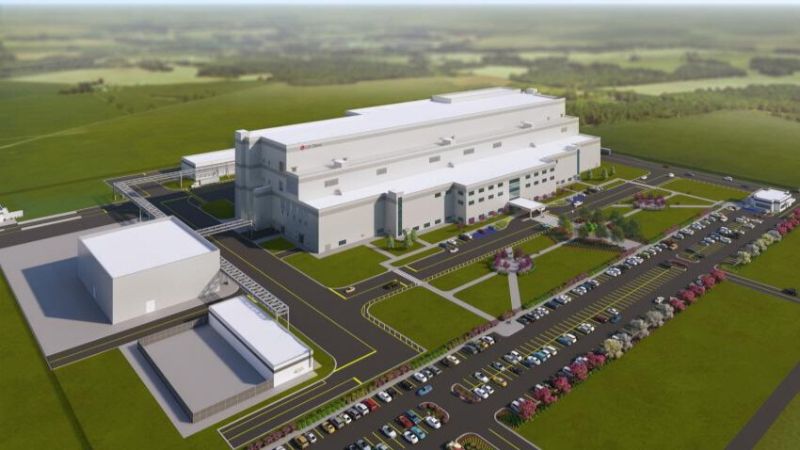LG Chem To Supply GM With Tons of Battery Cathode Material
LG Chem has agreed to supply General Motors with $19 billion worth of battery cathode materials, enough for 5 million battery-electric vehicles.
LG Chem, a leading global manufacturer of battery materials for electric vehicles (EVs), has secured a supply agreement with General Motors to provide the car manufacturer with 500,000 tons of battery cathode material valued at KRW 25 trillion (~18.7 billion USD). LG Chem is part of the larger LG Group, including Korean consumer electronics giant LG Electronics.
The agreement will supply enough battery cathode material from LG’s U.S.-based Tennessee plant for approximately 5 million electric vehicles. Construction of the Tennessee facility broke ground in 2023, with production planned to begin in 2026. The GM-LG Chem deal spans from 2026 to 2035.
LG Chem cathode production plant. Image used courtesy of LG Chem
The agreement expands upon the prior long-term deal initiated in 2022 between the two companies and provides additional detail on how much material will be supplied.
LG Chem Cathode Materials
Most of the NCMA (nickel, cobalt, manganese, aluminum) cathode materials produced at LG Chem’s Tennessee plant will supply Ultium Cells, the existing battery joint venture formed by LG Energy Solution and GM, but other EV battery projects may also use them, according to the agreement.
The cathode is one of the four main components of a lithium-ion battery cell used to form larger EV battery packs. The cathode serves as the energy source of the battery by producing usable electricity as lithium ions within the battery electrolyte combine with the cathode material. Conversely, during the charge cycle, electricity separates the lithium ions from the cathode to be stored as energy in the anode.
The cathode material produced at LG’s Tennessee facility will be optimized for high-performance North American EVs and capable of delivering a vehicle range of 500 km on a single battery charge.
Legislation, Incentives, and Strategic Considerations
Tax incentives established by the recent Inflation Reduction Act (IRA) are pushing automotive OEMs like GM to onshore much of their EV supply chain, including batteries.
Strategic collaborations, like the LG Chem-GM Supply Agreement, are a logical response to the IRA benefitting both parties. In exchange for direct investment in U.S.-based battery production, LG Chem secures market share for its battery technology with the largest auto manufacturer in North America. For its part, GM can better secure its battery supply chain for the coming decade while capitalizing on tax advantages afforded by using batteries manufactured in the US and North America.
Without a supply agreement in place to ensure demand, it is unlikely that LG would make such a significant investment in U.S.-based battery manufacturing. In this respect, the IRA seems to be making its intended impact on U.S .domestic EV production.
According to LG Chem CEO Shin Hak-cheol, the strategic collaboration with GM will allow the two companies to jointly drive the North American EV market into the future with an expanded EV battery production base.
Long-Term EV Plans, Short-Term Challenges
GM is strategically committed to a robust portfolio of electric vehicles in the coming decade, with $35 billion of planned investment in EV and AV technologies through 2025 alone. By the middle of the current decade, GM expects to ship one million EVs per year to its two largest markets, North America and China.
For GM, the Ultium project represents a major step forward in EV performance. The program has yielded battery packs with costs that are 40% lower than the current Chevrolet Bolt, and GM predicts the next generation of Ultium battery packs will be up to 60% less costly than today’s batteries.
Ultium EV battery technology. Image used courtesy of GM
However, the path to an EV future will not always be straight. Recent reports highlight weakening U.S. consumer demand for electric-only vehicles as evidenced by recent price cuts from Tesla and aging EV inventory on dealer lots.
It is perhaps important to note that the transition to EVs may be better measured in decades, not years.








